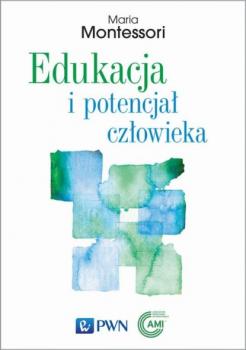Maria Montessori Montessori
Список книг автора Maria Montessori MontessoriDr. Montessori's Own Handbook
First published in 1914, “Dr. Montessori’s Own Handbook” by Maria Montessori is the practical and accessible guide book to the author’s famous educational approach. Montessori, born in 1870 in Chiaravalle, Italy to an educated and well-off family, became a famed Italian physician, author, and educator who applied rigorous scientific principles to the study of the schooling of young children. The result was a revolutionary approach that emphasized the importance of self-directed activity for children and that the learning environment must be adapted to the developmental level of the particular child. Montessori placed great importance on the role that physical activities have in helping children master both practical skills and abstract ideas. Montessori’s methods were a radical departure from the standard educational practices in both Europe and America in the early twentieth-century and have become widely influential in how modern educators teach young children in an interactive, engaging, and vibrant environment. In “Dr. Montessori’s Own Handbook,” she distills her extensive knowledge and research down to its basics and explains how to apply her methods to the education of grade school children. This detailed and approachable guide is indispensable for all educators and parents practicing the Montessori method.
The Montessori Method
"The Montessori Method" by Maria Montessori (translated by Anne E. George). Published by Good Press. Good Press publishes a wide range of titles that encompasses every genre. From well-known classics & literary fiction and non-fiction to forgotten−or yet undiscovered gems−of world literature, we issue the books that need to be read. Each Good Press edition has been meticulously edited and formatted to boost readability for all e-readers and devices. Our goal is to produce eBooks that are user-friendly and accessible to everyone in a high-quality digital format.
The Montessori Elementary Material
"The Montessori Elementary Material" by Maria Montessori (translated by Arthur Livingston). Published by Good Press. Good Press publishes a wide range of titles that encompasses every genre. From well-known classics & literary fiction and non-fiction to forgotten−or yet undiscovered gems−of world literature, we issue the books that need to be read. Each Good Press edition has been meticulously edited and formatted to boost readability for all e-readers and devices. Our goal is to produce eBooks that are user-friendly and accessible to everyone in a high-quality digital format.
The Montessori Method
This is, quite simply, one of the landmark books in the history of education. Written by influential Italian educator Maria Montessori (1870–1952), it describes a new system for educating young children based on materials and methods she originally developed to teach retarded students. The techniques proved highly effective with normal children as well. Her system, based on a radical conception of liberty for the pupil and a highly formal training of separate sensory, motor, and mental capacities, led to rapid and substantial mastery of reading, writing, and arithmetic. In The Montessori Method (1912), her first book, Dr. Montessori outlines her techniques in discussions of such topics as scientific pedagogy; discipline; diet; gymnastics; manual labor; education of the senses; methods for teaching reading, writing, and arithmetic; and many other topics. The Dover edition is the least expensive edition available, making this seminal classic widely accessible to teachers, principals, parents — anyone interested in the education of young children.
Dr. Montessori's Own Handbook
One of the truly great books on early childhood development, Maria Montessori's illustrated guide was written nearly a century ago in response to thousands of requests from American parents and teachers. In it, the noted educator provided copious information on how to use familiar, simple, easy-to-obtain classroom materials to make any home an effective learning environment. It was to be a «children's house,» where youngsters would be their own masters, and free to learn at their own pace.Sound cylinders, sandpaper letters, and numerical rods became features of the typical Montessori classroom. Designed to hone the child’s visual, auditory, and tactile perceptions, tools such as these enabled the child to experiment and learn through the powers of observation, recognition, judgment, and classification.An essential teaching aid for parents and educators, this handbook features sections on teaching music, arithmetic and language, and developing sensory and motor skills.









